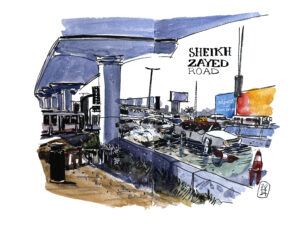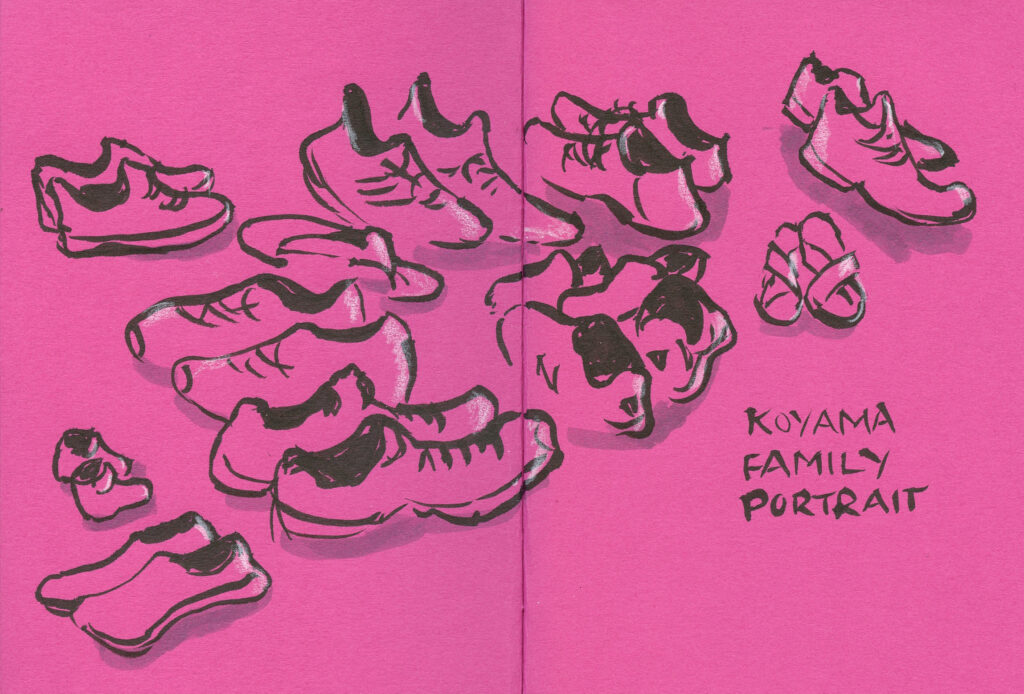
All morning, the sun dipped in and out of clouds over Grand Prairie, a suburb of Dallas where my family had found an ideal house to rent for the long weekend.
Ten of us had flown to Texas from Seattle, Washington; San Jose and Los Angeles, California; and College Park, Maryland, for the major astronomical event of the year: a total solar eclipse on April 8.
I had not seen a couple of family members since before the pandemic, so this gathering was especially precious to me. We even got matching T-shirts commemorating the eclipse, including one for our newest family member, my 18-month-old grand-niece.
Grand Prairie was in the center of the path of totality, ensuring maximum viewing time — nearly four minutes — of the event’s climactic phase. Ensured, of course, as long as the sun was unobscured.
The eclipse was to begin in the early afternoon. Over breakfast, my family yay’d when it was sunny; when clouds reappeared, we boo’d.

Donning our ISO-approved safety glasses (made of cardboard and in two styles) and our matching T-shirts, we gathered on the back lawn. My brother had staked out an ideal location to set up his high-end camera gear. I came prepared with a white pencil and a sketchbook containing dark blue paper, which I thought would be the most efficient way to document the moon’s path.
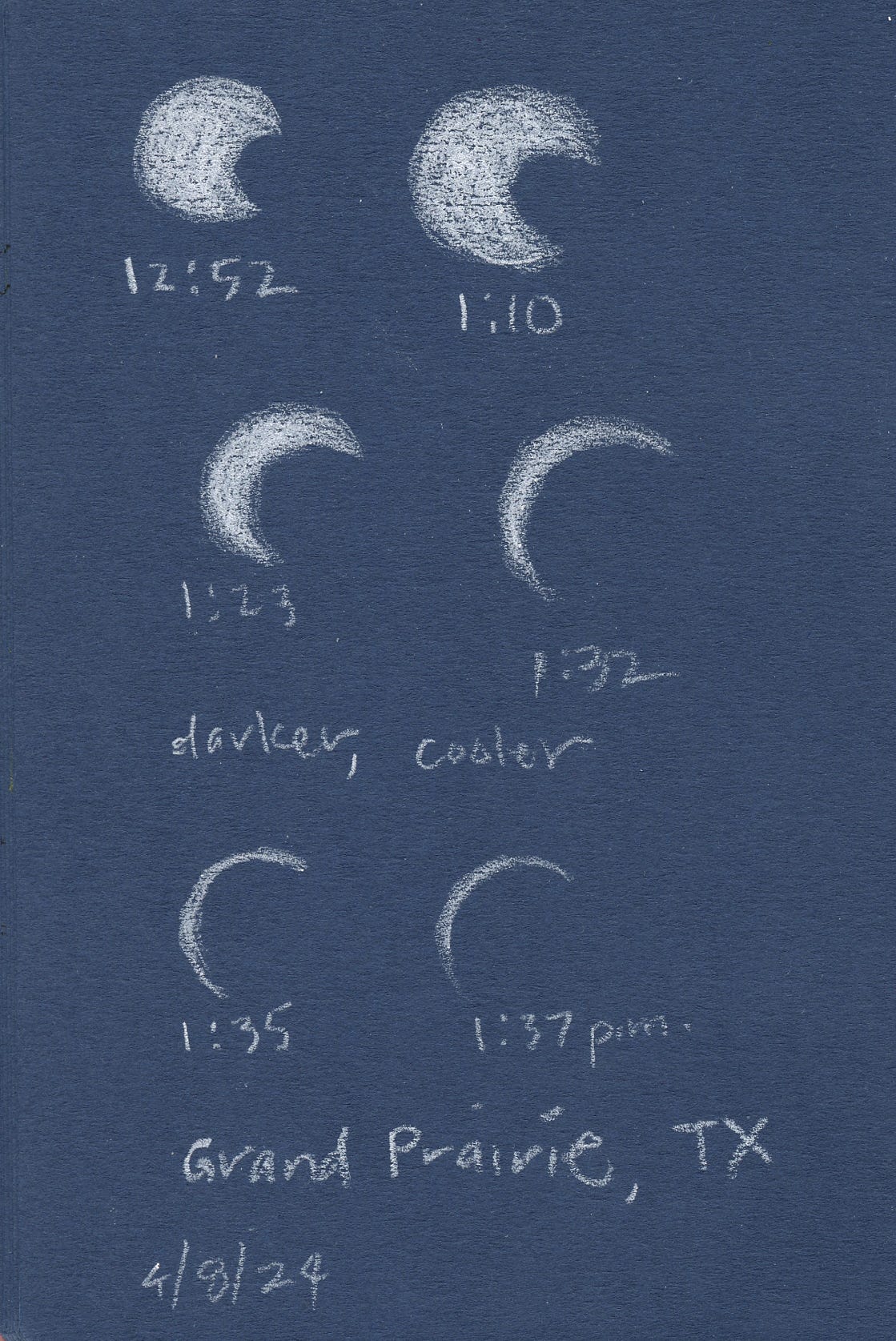
At 12:52 p.m., I made my first sketch of the partial occlusion. Clouds continued to drift past sporadically; when the coverage was thick, the sun could not be seen at all.
As totality inched closer, the tension and anticipation increased. By 1:30 p.m., it had become perceptibly cooler and darker.
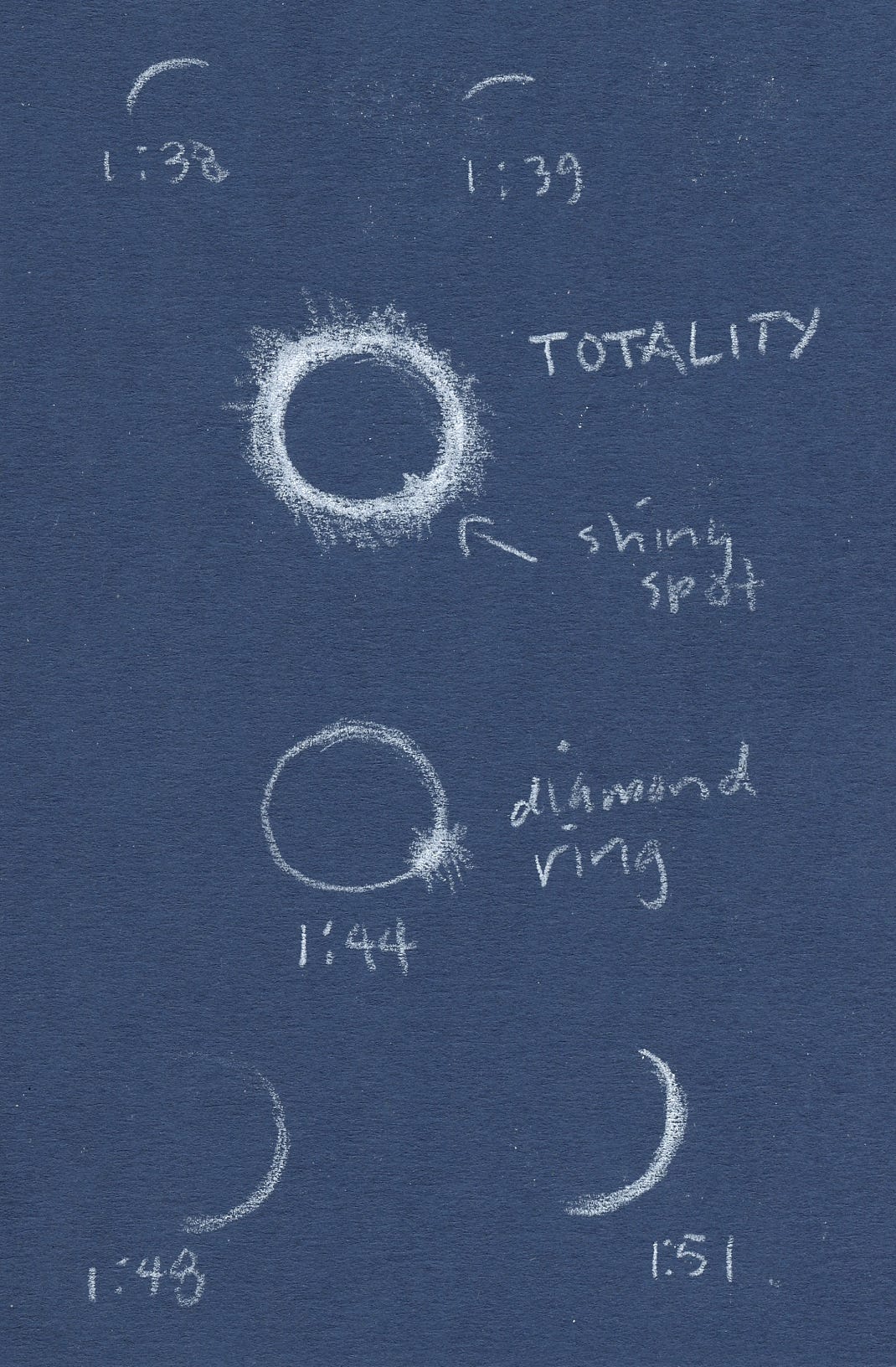
At 1:40 p.m., the clouds parted. Birds we had heard earlier stopped singing, and an eerie darkness, very different from night, fell. The totality phase had begun! Finally able to view the sun without protection, we screamed and cheered, awed by the spectacular experience for nearly four minutes – completely unmarred by clouds.
At 1:44 p.m., the “diamond ring” appeared (a moment sought by photographers), signaling the end of totality. Scrambling to put on our protective glasses again, we sighed collectively and applauded.
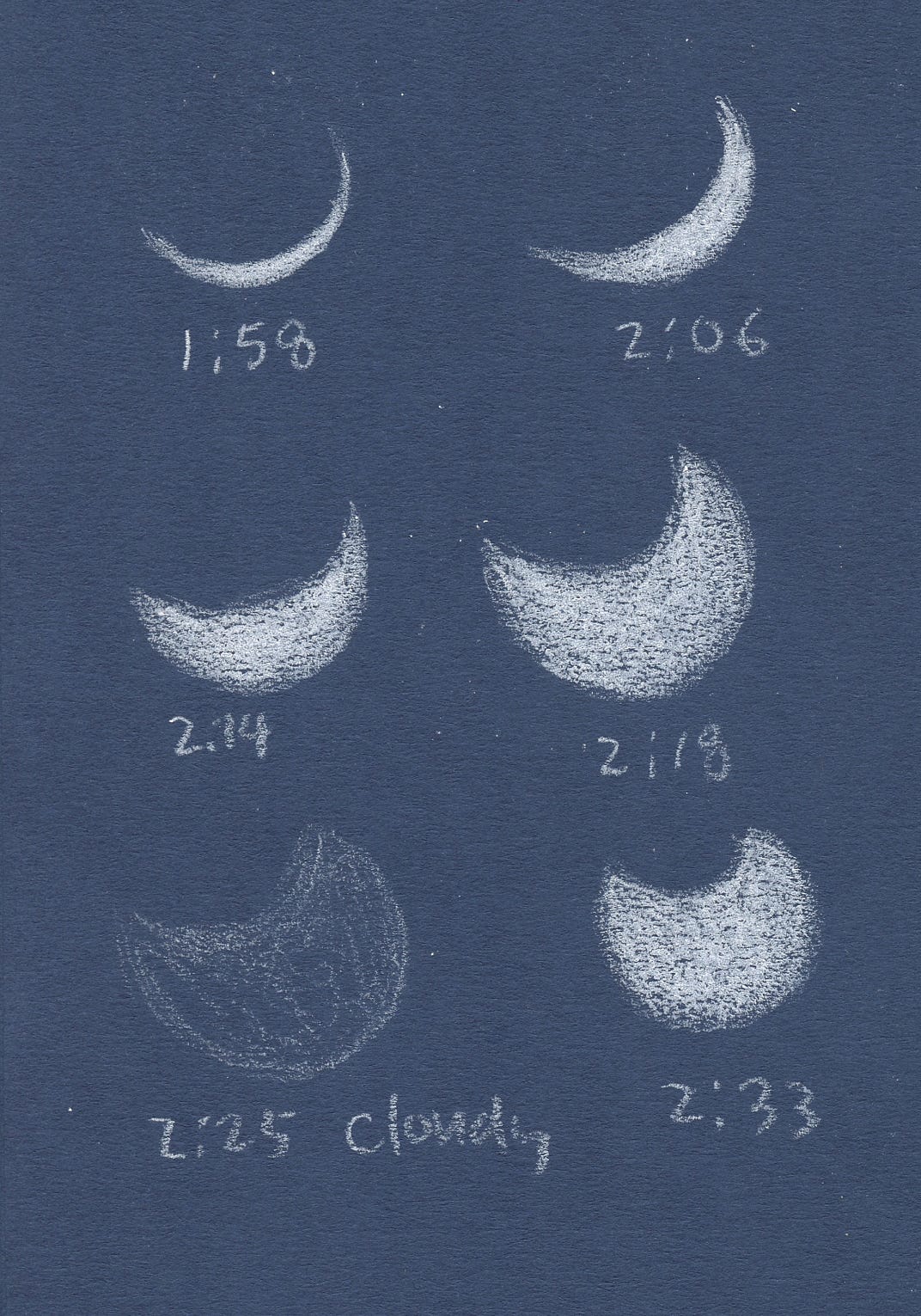
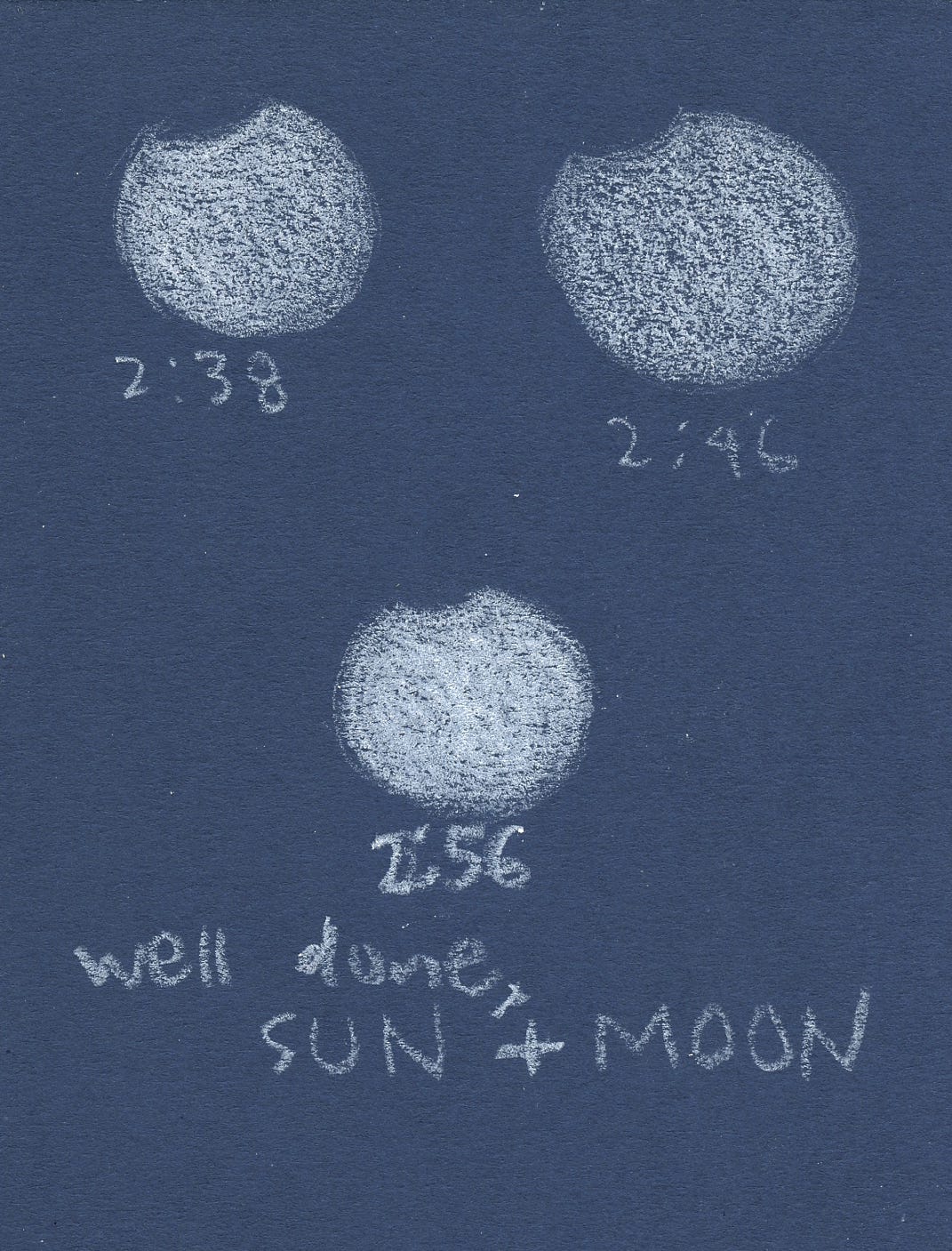
Viewing a total solar eclipse together was not new to the Koyama family: Aug. 21, 2017, in Oregon had been our first such experience. That time, clear summer skies were forecast, and we enjoyed a perfectly unobscured viewing. In Texas, though, conditions were iffy.
Although I would have been disappointed if clouds had kept us from seeing the moon’s alignment with the sun, that weekend would not have been less special. For me, reuniting with my family is the part I cherish.



